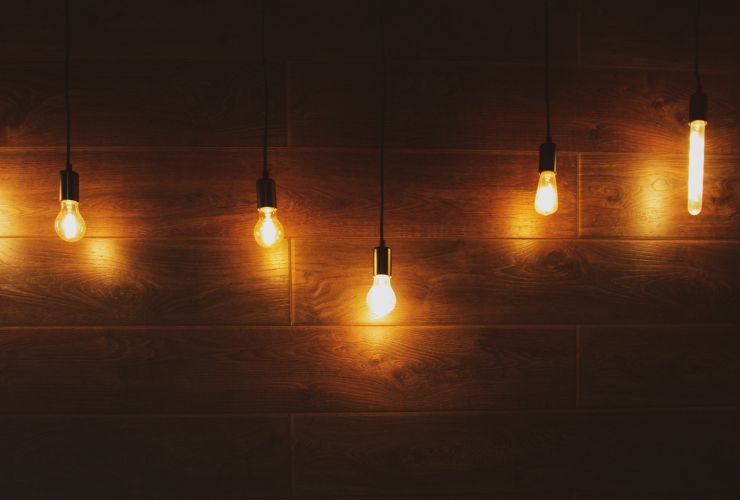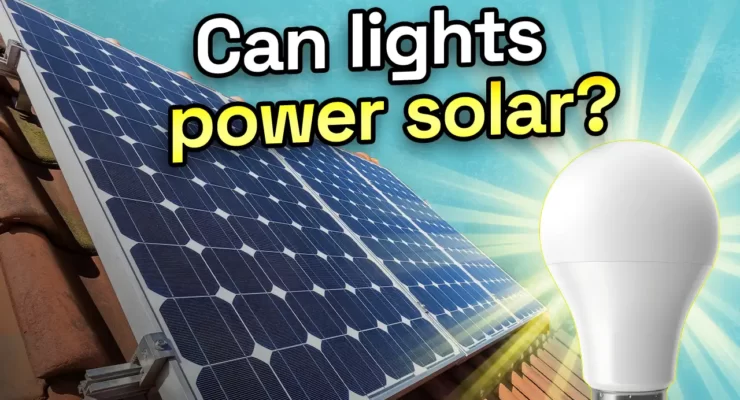Fast read
Solar panels can technically work under intensive artificial light at night, including high-intensity lamps or LEDs.
This method faces challenges because of efficiency loss caused by varying light and heat conditions. It also has high energy consumption, resulting in a net loss. Additionally, there are economic concerns and worries about its impact on the environment.
With modern solar panels' efficiency only reaching 20-23%, the conversion of artificial light to electricity via solar is not economical.
This idea is limited by science, money, and technology, so it's not a likely solution right now.
Could artificial light be the source of solar panels?
How good would it be if artificial lights could power solar panels so that we can get even more energy at night?
Solar panels, or photovoltaic (PV) panels, consist of many individual photovoltaic cells made primarily of silicon. These cells are semiconductor devices that create electricity through the photovoltaic effect. Understanding how solar panels work is essential to understanding how artificial light affects them. Photovoltaic (PV) cells, primarily made of silicon, are the building blocks of solar panels.
Through the photovoltaic effect, these cells produce a direct current (DC) electrical flow when exposed to sunshine. The intensity and spectrum of the incident light are two variables that affect how much energy is generated. If the light source provides photons with enough energy, the PV cells will produce electricity.
While not all light can activate a solar panel, a range of wavelengths of light within solar energy irradiation can start electrons. These electrons then create power within a solar panel. The amount of energy depends on the spectrum and the intensity of that light. This means that any intensive light source, not just the sun, could potentially be used to generate solar power within a solar panel.
A strong light will need a lot of energy
To use bright light at night, you need a strong artificial light source to make solar panels work. This source could be something like high-intensity discharge (HID) lamps, LEDs, or laser lights. However, there are several considerations that make this possibility less appealing.
Efficiency
The efficiency of a solar panel depends on the wavelength of light it receives. Sunlight has a broad light spectrum, including visible light, UV, and infrared. Different light sources may not be the best for solar panels. This can cause the panels to work less effectively.
Heat
When we use extremely strong artificial lights, they can give off heat. But here’s the catch: that heat can actually make solar panels work less efficiently.
Solar panels become less effective at generating power when they get too hot. This is because the photovoltaic cells inside the panels, which convert sunlight into electricity, are affected by the heat. The cells are not able to generate as much power when they are overheated. This can reduce the overall efficiency of the solar panels.
So, if we’re using intense artificial lights to power solar panels, we might end up with a problem. The heat from those lights could make the solar panels less effective at turning light into electricity.
Energy consumption calculation
Using artificial light to power solar panels would consume more energy than the panels would produce, creating a net loss in energy.
This is because of the second law of thermodynamics and overall energy conversion inefficiencies in both the light source and the solar panels. Modern panels in many cases only have an energy efficiency of 20 to 23%. This means from the light energy hitting the panel, only up to 23% is coming back in electricity generation.
This is okay if the light source is the sun, but in the case of artificial light, we would actually lose more than 75% of the power we need in the 1st place to generate the intensive light.

Economic consideration
When we think about using intense artificial light to power solar panels, there’s a significant financial concern. It’s quite possible that the cost of making all that artificial light might be more than the benefit we get from the electricity the solar panels produce.
Plus, just turning artificial light into electricity through solar panels already means we lose some energy. So, even before we think about the cost of making artificial light, we’re not getting as much energy out as we’re putting in.
When we add these energy losses and the costs of making artificial light, it seems like this setup might not be worth it financially. So, from a money perspective, investing in this idea might not be a smart move.
Don’t rely on artificial light to power solar panels
The main idea here is that solar panels can’t generate more electricity than what the light bulb needs to work. So, trying to use artificial light to power solar panels isn’t a smart move.
It’s like trying to fill a bucket with water that’s already being used to water a plant. You won’t get any extra water for your bucket. This simple fact makes it clear that relying on artificial light to power solar panels won’t give us any real benefits.
Conclusion
Technically, solar panels can work under intensive artificial light at night. However, because of the inefficiencies, heat problems, energy consumption, economic considerations, and environmental impact, it’s generally not a practical solution for generating power.
Using artificial light to power solar panels may seem like a good idea, but it’s actually extremely complicated. It involves physics, economics, and engineering, making it unlikely to work well with our current technology.
Efforts are being made to improve the efficiency of solar panels in sunlight. Additionally, researchers are working on developing methods of energy storage solutions for use during periods when the sun is not shining.



